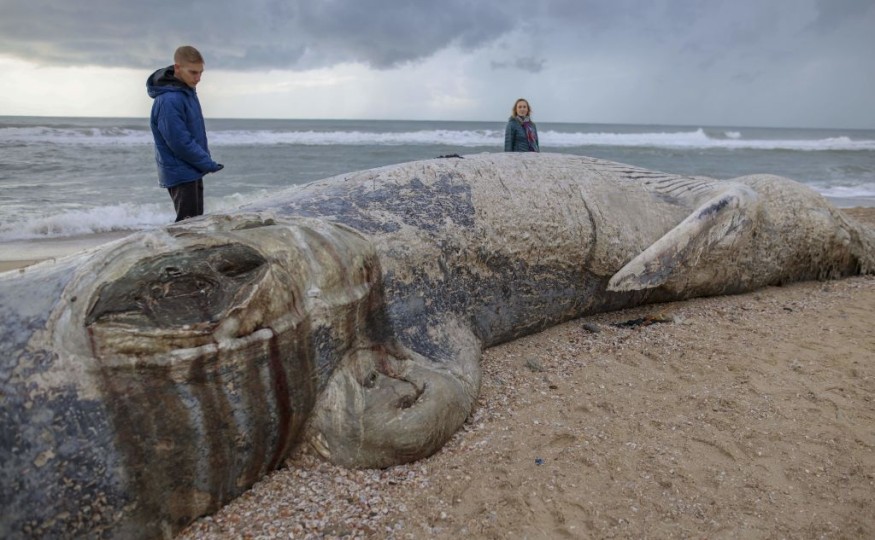Thousands of whales, dolphins and other marine animals wash up on shore every year around the world. The beaching or stranding phenomenon occurs on both healthy and dead animals driven to the beach by many factors, including prevailing winds or illness.
One of the recent whale beaching reported was from Israel, in which a carcass of a sperm whale washed up on the Mediterranean shore of Tel Aviv a few days ago. It is the second incident this year, just three months after the first one in February.

Dead Sperm Whale in Tel Aviv Shore
A dead sperm whale washed up on the shore of Tel Aviv, Israel Friday, May 20, according to a report from WHTC. The 30-foot-long (10-meter-long) whale startled many beachgoers and residents of the large mammal and many flocked to get a closer look at the endangered species.
Israeli marine wildlife NGO Delphis said that the whale appeared to be a young female sperm whale, the largest toothed predator in the world. Authorities are currently conducting an analysis to learn the cause of death of the large mammal.
However, the marine life specialists also noted that it might be challenging to determine the cause of death because the state of decomposition is so advanced. On the other hand, they speculate that its cause of death could also be the same as the giant fin whale that washed up on the shore of southern Israel in 2021, which died due to pollution.
How Often Do Whales Get Beached or Stranded?
A 2019 report by the international group of experts called Cetacean Specialist Group reveals that below hundreds of Mediterranean sperm whales get beached every year due to fishing driftnets for the depopulation.
Additionally, the National Oceanic and Atmospheric Administration (NOAA) has recorded an increase in gray whale strandings in North America from Mexico to Alaska since Jan. 1, 2019. The phenomenon was dubbed an Unusual Mortality Event (UME).
As of May 6, 2022, there are about 65 gray whale strandings in North America recorded since the start of the year. Most strandings this year are recorded in Mexico with 53 cases and the rest 12 cases are in the US.
But the beaching cases are still greater in 2019, with 216 gray whales beached. The number slowly decreased, probably due to the pandemic when human movement was limited. In 2020, the number of beaching cases was down to 172, then in 2021, it decreased to 114. In total, there were 567 beached gray whales from 2019 to May 2022.
According to National Geographic, there are times when whales and other marine animals beach themselves in groups in what experts call mass strandings, wherein a region might see an unusual number of marine animals being stranded over a period of time.
In the UK, the Zoological Society of London's Cetacean Strandings Investigation Program (CSIP) has logged over 12,000 beaching incidents of cetaceans since 1990. The most notable of these strandings was in 2015, when more than 300 sei whales in Patagonia, southern Chile, were stranded.
RELATED ARTICLE 4 : 7-Foot Dead Sperm Whale Found in Florida Keys Likely Died Due to Various Debris in Its Stomach, Experts Say
Check out more news and information on Whales in Science Times.
© 2025 ScienceTimes.com All rights reserved. Do not reproduce without permission. The window to the world of Science Times.











